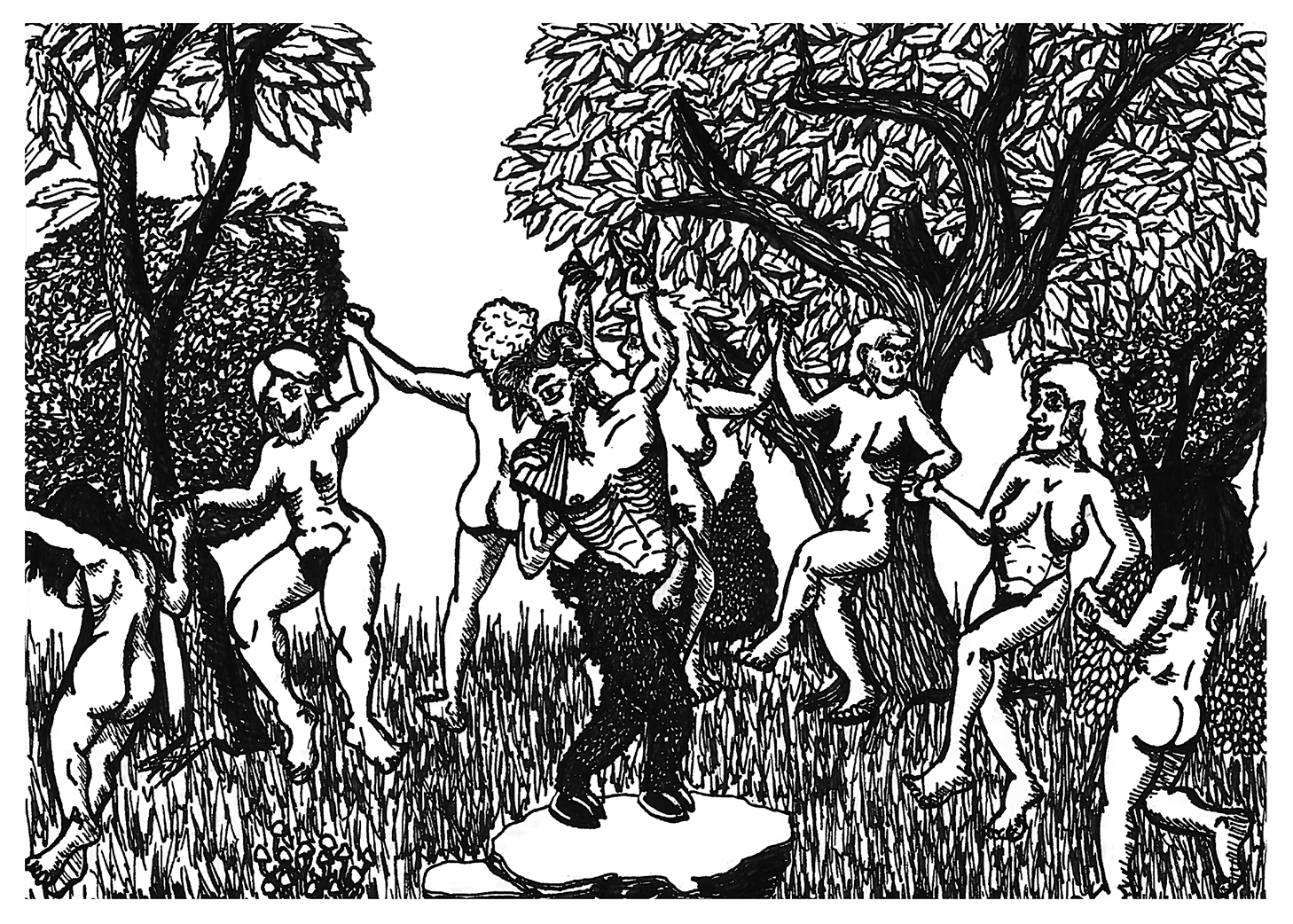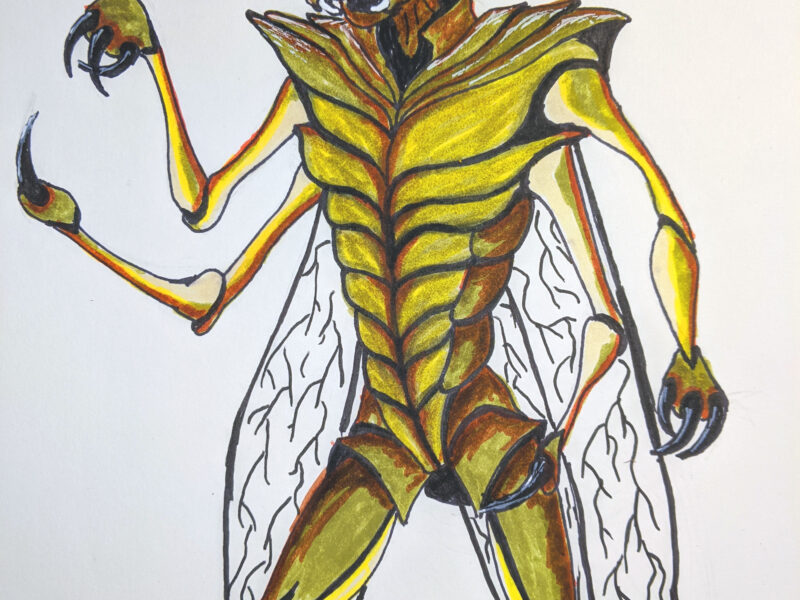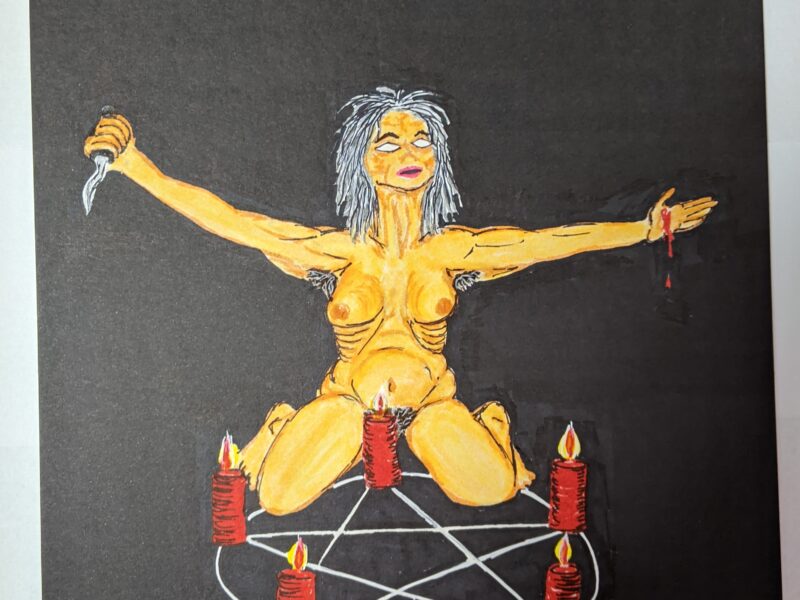For all of us heathens, hedonists, and other hellbound creatures; Pan or other depictions of the horned God (s) are always fun. This is especially true when he his surrounded by dancing ladies in their natural costumes. Pan’s Dance is a pen and ink drawing on Bristol at 9×12.
Here is some background on the subject of Pan.
Pan in Mythology
Pan is a significant figure in Greek mythology, known as the god of the wild, shepherds, flocks, nature, and rustic music. He is often depicted with the legs, horns, and beard of a goat, embodying the spirit of the wilderness and untamed nature.
Origins and Depictions
- Parentage: Pan is generally considered the son of Hermes and a nymph, though some myths suggest different parentage.
- Appearance: Pan is typically depicted as a satyr, with human upper body and the hindquarters, legs, and horns of a goat. His appearance reflects his association with nature and the forest.
Role and Attributes
- God of Nature: Pan is intimately connected with nature, often seen wandering through forests, mountains, and fields. He represents the wild, untamed aspects of the natural world.
- Patron of Shepherds and Flocks: As the protector of shepherds and their flocks, Pan was venerated by those who depended on pastoral livelihoods.
- Musical Talent: Pan is famed for his musical prowess, particularly with the pan flute, an instrument said to be invented by him. His music has the power to captivate and even entrance gods and mortals alike.
- Panic: The term “panic” is derived from Pan’s name, stemming from the god’s ability to instill sudden, irrational fear in people, particularly travelers in the wilderness.
Pan’s Relationship to Art and Culture
Pan’s influence extends beyond mythology into various aspects of art and culture, reflecting his multifaceted nature.
In Visual Arts
- Classical Representations: In ancient Greek and Roman art, Pan is frequently depicted in sculptures, pottery, and mosaics. His likeness appears in scenes of pastoral life and mythological narratives, often highlighting his playful and mischievous character.
- Renaissance and Beyond: During the Renaissance, artists like Piero di Cosimo and Nicolas Poussin revived interest in Pan, portraying him in paintings that emphasized his connection to nature and rustic life. His image continued to evolve, symbolizing the idyllic and the arcane.
In Literature
- Ancient Texts: Pan appears in various works of ancient literature, including the Homeric Hymns and Ovid’s “Metamorphoses,” where his myths are recounted and expanded.
- Romantic and Victorian Eras: Writers of the Romantic and Victorian periods, such as John Keats and Robert Louis Stevenson, drew inspiration from Pan, often depicting him as a symbol of natural beauty and primal energy. Pan’s presence in literature during these periods underscores a fascination with nature and the pastoral ideal.
In Music
- Pastoral Symphonies: Pan’s association with music and the pastoral has influenced compositions and musical genres. Composers like Ludwig van Beethoven and Claude Debussy created works that evoke the pastoral themes and natural landscapes that Pan represents.
- Opera and Ballet: Pan has also appeared in operas and ballets, where his character is often used to explore themes of nature, love, and rustic life.
In Modern Culture
- Popular Culture: Pan’s image persists in modern popular culture, appearing in films, literature, and art that explore themes of nature and the supernatural. His character has been adapted and reinterpreted in various contexts, from fantasy literature to contemporary art installations.
- Symbol of Naturalism: In contemporary discussions on naturalism and environmentalism, Pan sometimes serves as a symbol of the intrinsic connection between humans and nature, representing a call to return to and preserve natural landscapes.
Conclusion
Pan’s mythology and his relationship to art and culture illustrate the enduring impact of this ancient god. From classical depictions to modern adaptations, Pan continues to symbolize the wild, untamed aspects of nature and the rustic charm of pastoral life. His influence permeates various forms of artistic expression, highlighting humanity’s ongoing fascination with and reverence for the natural world.



